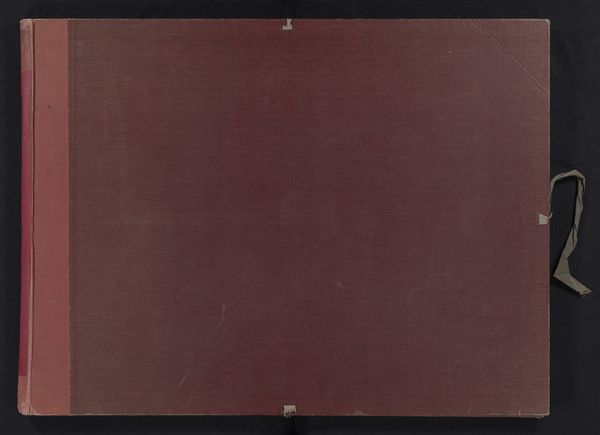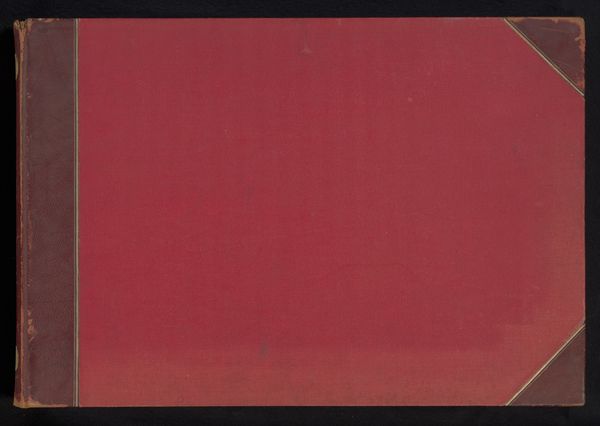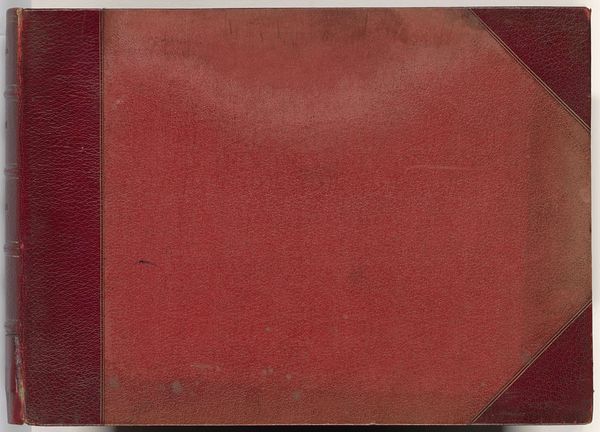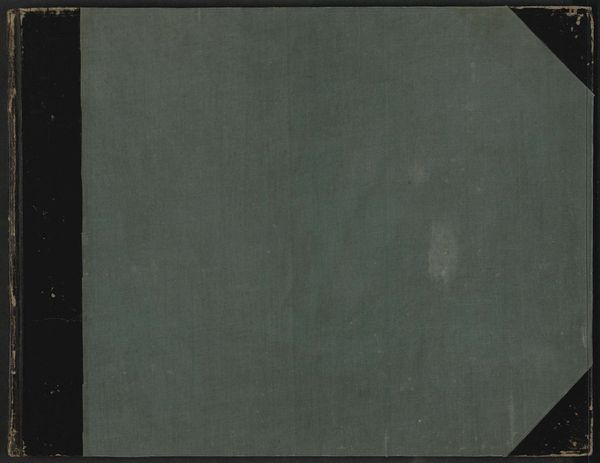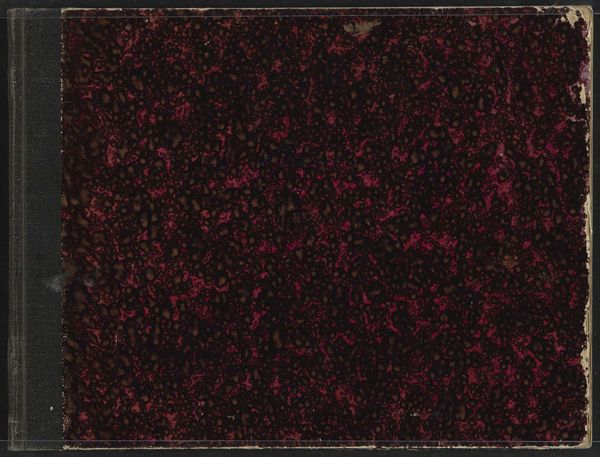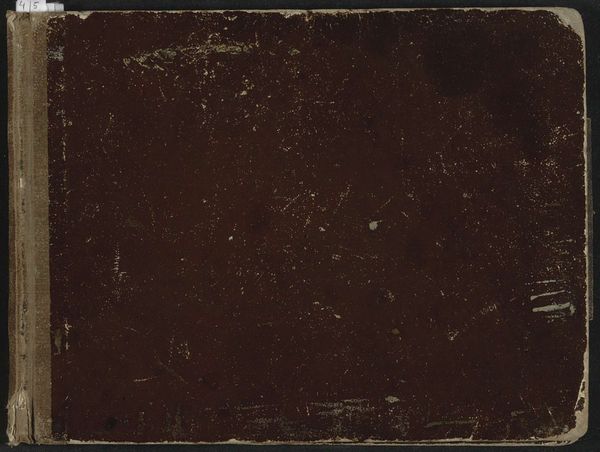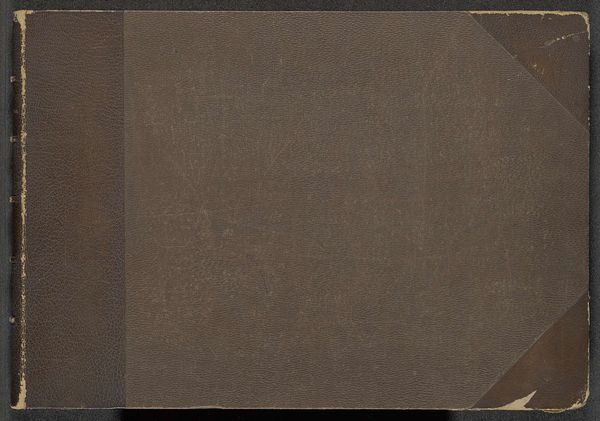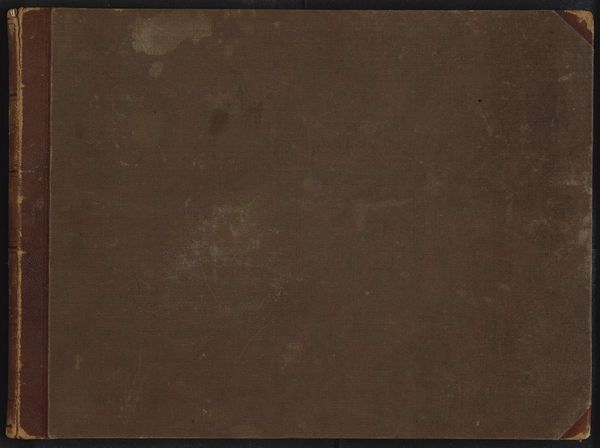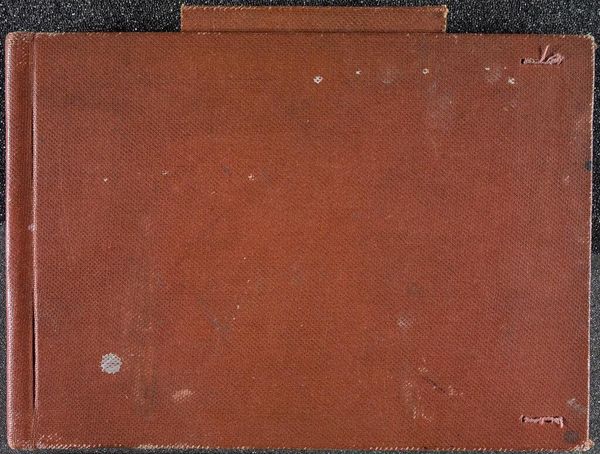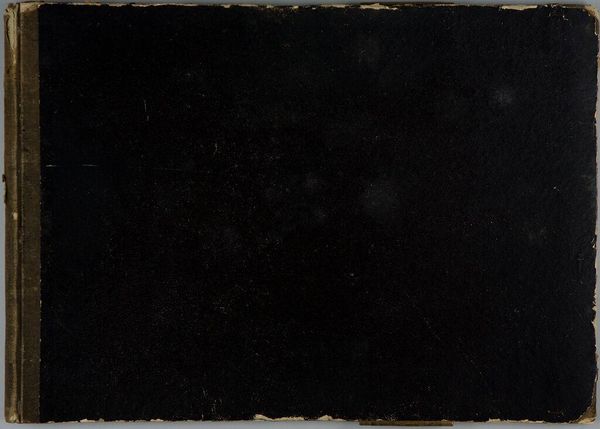
Reisalbum met foto's van bezienswaardigheden in Italië en Frankrijk 1860 - 1900
0:00
0:00
diversevervaardigers
Rijksmuseum
paper, photography, albumen-print
#
toned paper
#
book
#
paper
#
photography
#
watercolor
#
albumen-print
Dimensions: height 295 mm, width 800 mm, width 390 mm, thickness 42 mm
Copyright: Rijks Museum: Open Domain
Curator: We’re looking at "Reisalbum met foto's van bezienswaardigheden in Italië en Frankrijk," or "Travel Album with Photos of Sights in Italy and France" from the late 19th century. This object from the Rijksmuseum features albumen prints, photographs, paper, and some watercolor. Editor: Well, it presents itself as quite understated. A deep reddish-brown cover, aged. There’s a subtle rectangular form at play, framed by the darker trim of the album, hinting at stories kept within. A compelling study of age, really. Curator: Compelling indeed, if you consider the labor embedded. Think of the photographers traversing Italy and France, the developing and printing processes – albumen prints being so popular at the time. These journeys would have been arduous! The paper too, of varying types, speaks to the materials available and the level of craft. It’s a material record of early tourism and photography as an industry. Editor: I agree that there’s so much physical presence— the heft of it must be quite satisfying. Still, from a purely formal perspective, it’s how those textures—the almost velvet sheen of the cover clashing gently with the rougher corner edges—creates such subtle, rewarding depth. The staining of the cover itself adds to this formal contrast. Curator: Absolutely, and consider how these albums served the elite. Consumption of travel as a sign of status, of leisure afforded by economic conditions…These images immortalized a certain lifestyle made possible through very specific labor structures of the era. Editor: A valid consideration! However, consider this. These collected images created curated experiences and presented through precise compositions: think leading lines, strategic shadow play, or a stark focal point. There’s an attempt to immortalize subjective visual perception that transcends the political economy that sustained its production. Curator: I concede that artistry and intent do come into play, but the act of assembling these albums itself, selecting and arranging these images... this becomes an act of production itself. Whose narrative were they trying to construct through that choice of arrangement, that’s what truly interests me? Editor: Well, you’ve provided much food for thought! It shows how even in an object so ostensibly simple there can be such formal complexity that speaks so intimately across different periods. Curator: Agreed! It offers fascinating insights into both historical context and creative labour from diverse viewpoints.
Comments
No comments
Be the first to comment and join the conversation on the ultimate creative platform.
